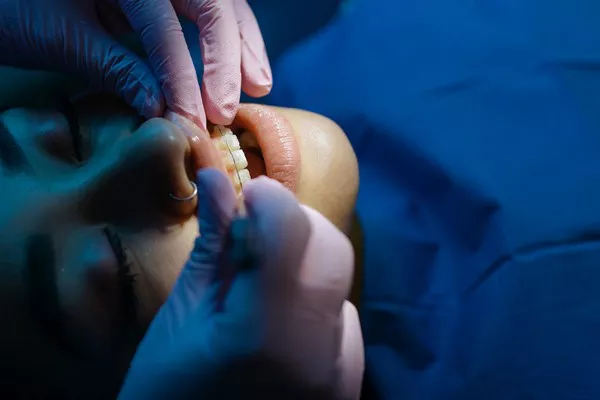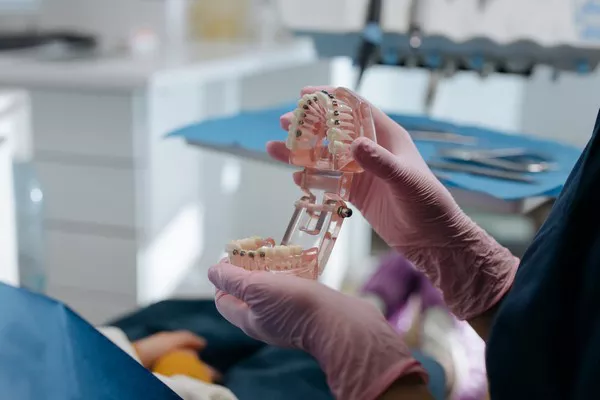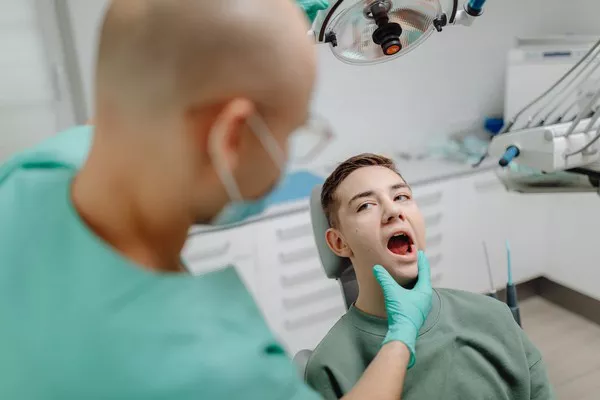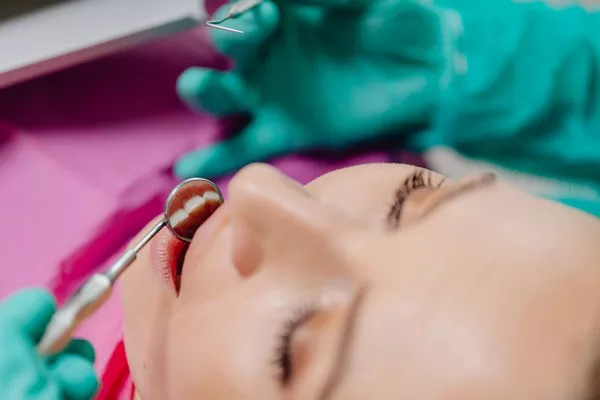Wisdom teeth removal is a common procedure that many individuals undergo to prevent or address dental issues such as crowding, infection, or impaction. Proper post-operative care is essential for a smooth recovery and to minimize the risk of complications. This guide provides detailed instructions and tips on various aspects of recovery, including pre-surgery preparation, pain management, preventing dry socket, oral hygiene, dietary recommendations, rest and recovery, dealing with bleeding, post-surgery symptoms, long-term recovery, and when to contact a healthcare professional.
Pre-Surgery Preparation
Proper preparation before wisdom teeth removal can help reduce inflammation and improve recovery outcomes. Here are some tips:
Maintain Good Oral Hygiene: Brush and floss regularly to keep your teeth and gums healthy. This reduces the risk of infection.
Rinse with Salt Water: Rinse your mouth with a solution of warm salt water (1 teaspoon of salt in a cup of water) to help reduce inflammation and bacteria in the mouth.
Use an Antibacterial Mouthwash: Consider using a chlorhexidine mouthwash if recommended by your dentist to further reduce oral bacteria.
Avoid Irritants: Refrain from smoking, drinking alcohol, and consuming very hot or spicy foods in the days leading up to the surgery, as these can irritate the gums.
Stay Hydrated: Drink plenty of water to keep your body hydrated and your tissues in good condition.
Follow Dietary Guidelines: Eat a balanced diet rich in vitamins and minerals to support your immune system and overall health.
Pain Management
Managing pain effectively after wisdom teeth removal is crucial for comfort and recovery. Here’s how to handle it:
Over-the-Counter Pain Relievers: Commonly recommended medications include ibuprofen and acetaminophen. Ibuprofen helps reduce inflammation and pain, while acetaminophen addresses pain relief. Follow the dosage instructions provided by your healthcare provider.
Prescription Medications: In some cases, stronger pain relief may be prescribed. Use these medications as directed and be aware of potential side effects.
Ice Packs: Apply ice packs to the outside of your cheek near the extraction site for 20 minutes on and 20 minutes off. This helps reduce swelling and numbs the area, providing pain relief.
Elevate Your Head: Keeping your head elevated, especially while sleeping, can reduce swelling and discomfort.
Preventing Dry Socket
Dry socket is a painful condition that can occur if the blood clot at the extraction site is dislodged. Here’s how to prevent it:
Avoid Smoking: Refrain from smoking for at least 72 hours post-surgery. Smoking can dislodge the blood clot and introduce harmful chemicals to the site.
Stay Away from Alcohol: Do not consume alcohol as it can interfere with the healing process and increase the risk of complications.
Do Not Use Straws: Avoid using straws or any sucking motions, as these can dislodge the clot.
Avoid Touching the Area: Do not poke or prod the extraction site with your tongue, fingers, or any objects.
Follow Eating Instructions: Stick to the recommended dietary guidelines to prevent food particles from disturbing the extraction site.
Oral Hygiene
Maintaining cleanliness at the extraction site is critical for preventing infection:
Do Not Rinse on the First Day: Avoid rinsing your mouth for the first 24 hours after surgery to allow the blood clot to form undisturbed.
Gentle Rinsing: After the first day, rinse your mouth gently with a salt water solution or a prescribed chlorhexidine mouthwash. Do this after meals and before bed.
Brush Carefully: Continue brushing your teeth but avoid the extraction site. Use a soft-bristled toothbrush and be gentle to prevent disturbing the area.
Avoid Spitting Vigorously: Spit gently to avoid dislodging the blood clot.
Hydration: Drink plenty of water to keep your mouth moist and help flush out any food particles.
Dietary Recommendations
What you eat post-surgery can significantly impact your recovery:
Soft Foods: Eat soft foods that require minimal chewing, such as mashed potatoes, yogurt, applesauce, and smoothies.
Cold Foods: Cold foods like ice cream and chilled soups can soothe the area and reduce swelling.
Avoid Small Grains and Seeds: Foods like rice, quinoa, and seeds can get stuck in the extraction site, increasing the risk of infection.
Nutritious Foods: Opt for nutrient-dense foods like avocado, eggs, and well-cooked vegetables to support healing.
Avoid Hard, Crunchy, or Chewy Foods: Stay away from foods like chips, nuts, and raw vegetables that can irritate the site.
Hydration: Drink plenty of fluids but avoid carbonated drinks and beverages that are too hot.
Rest and Recovery
Take It Easy: Plan to take at least a few days off work or school to rest. Avoid strenuous activities and exercise for at least a week.
Use Ice Packs: Apply ice packs to your face for the first 24-48 hours to reduce swelling.
Keep Your Head Elevated: Use extra pillows to keep your head elevated while sleeping to minimize swelling.
Follow Your Body’s Signals: Listen to your body and avoid overexertion. Rest when you feel tired and avoid pushing yourself too hard.
Dealing with Bleeding
Managing post-operative bleeding is essential for proper healing:
Gauze Pads: Bite down gently on a gauze pad placed over the extraction site. Change the gauze every 30-45 minutes or as needed until the bleeding subsides.
Tea Bags: If bleeding persists, use a dampened tea bag (black tea) instead of gauze. The tannins in tea can help constrict blood vessels and reduce bleeding.
Avoid Disturbing the Site: Refrain from spitting, rinsing, or touching the area excessively, as this can prolong bleeding.
Stay Upright: Sit up and avoid lying flat to reduce blood pressure in the head and minimize bleeding.
Post-Surgery Symptoms
Understanding normal post-surgery symptoms helps in managing expectations:
Swelling: Swelling peaks around 48-72 hours after surgery and then gradually subsides. Applying ice packs and keeping your head elevated can help.
Pain: Pain is common and should be managed with prescribed or over-the-counter pain medications.
Bruising: Some bruising around the jaw and cheeks is normal and will fade over a week or two.
Jaw Stiffness: Difficulty opening your mouth wide is common. Gentle jaw exercises as recommended by your surgeon can help alleviate this.
Minor Bleeding: Oozing and minor bleeding are normal for the first 24-48 hours. Follow the instructions for dealing with bleeding if it becomes excessive.
Long-Term Recovery
Recovery timelines can vary, but here are some general guidelines:
Initial Recovery: Most people experience significant improvement within 3-5 days. Swelling and pain should start to decrease by this time.
Full Recovery: Complete healing of the extraction site can take up to 2 weeks. During this period, continue following oral hygiene and dietary recommendations.
Bone Healing: The underlying bone may take several months to fully heal. During this time, avoid any activities that could disrupt the area.
Follow-Up Appointments: Attend any scheduled follow-up appointments to ensure proper healing and address any concerns.
When to Contact a Healthcare Professional
Knowing when to seek medical help is crucial for preventing complications:
Severe Pain: If pain is not controlled by prescribed medications or becomes increasingly severe, contact your dentist or oral surgeon.
Excessive Bleeding: If bleeding continues beyond the first 24 hours or is heavy and unmanageable, seek medical attention.
Signs of Infection: Symptoms such as fever, foul taste, pus, or increased swelling may indicate an infection.
Persistent Numbness: Prolonged numbness beyond the expected recovery period could suggest nerve damage.
Difficulty Breathing or Swallowing: Seek immediate medical help if you experience difficulty breathing or swallowing.
Conclusion
Proper care and attention to the detailed instructions provided above can significantly enhance the recovery process following wisdom teeth removal.
FAQs about Wisdom Teeth Removal
1. Can I eat rice 7 days after wisdom teeth removal?
Yes, you can generally eat rice 7 days after wisdom teeth removal, but it’s essential to ensure that you’re comfortable doing so. By the seventh day, most people have started to heal, and their ability to chew soft foods like rice has improved. However, if you experience any pain or discomfort while eating, it’s best to stick to softer foods and consult your dentist or oral surgeon for guidance.
2. When is dry socket no longer a risk?
Dry socket, a painful condition that can occur after wisdom teeth removal when the blood clot in the extraction site becomes dislodged or dissolves prematurely, is typically a concern during the first few days following the procedure. While every individual’s healing process is different, the risk of dry socket significantly decreases after the first week post-extraction. By the time the extraction site has healed, usually within two weeks, the risk of dry socket is minimal. However, it’s essential to follow your dentist or oral surgeon’s post-operative care instructions diligently to minimize the risk of complications.
3. Can I drink coffee after wisdom teeth removal?
It’s generally recommended to avoid drinking hot beverages like coffee for at least the first 24 hours following wisdom teeth removal. Heat can increase blood flow to the extraction site, potentially leading to bleeding or discomfort. Additionally, caffeine can interfere with the healing process and may increase sensitivity in the area. After the initial 24 hours, you can gradually reintroduce coffee into your diet, but it’s best to stick to lukewarm or cold beverages and avoid using straws, as the sucking motion can dislodge blood clots and increase the risk of complications.
4. Can I brush my teeth after wisdom teeth removal?
It’s essential to maintain good oral hygiene following wisdom teeth removal, but it’s crucial to do so gently and carefully to avoid disrupting the healing process. You can start brushing your teeth again the day after the extraction, but be sure to avoid the extraction sites to prevent irritation or injury. Instead, focus on gently brushing the rest of your teeth and tongue using a soft-bristled toothbrush. You may also be instructed to rinse your mouth with a saltwater solution or an antimicrobial mouthwash to help keep the area clean and reduce the risk of infection. If you have any concerns about when or how to resume brushing your teeth, don’t hesitate to contact your dentist or oral surgeon for guidance.
You Might Be Interested In






























